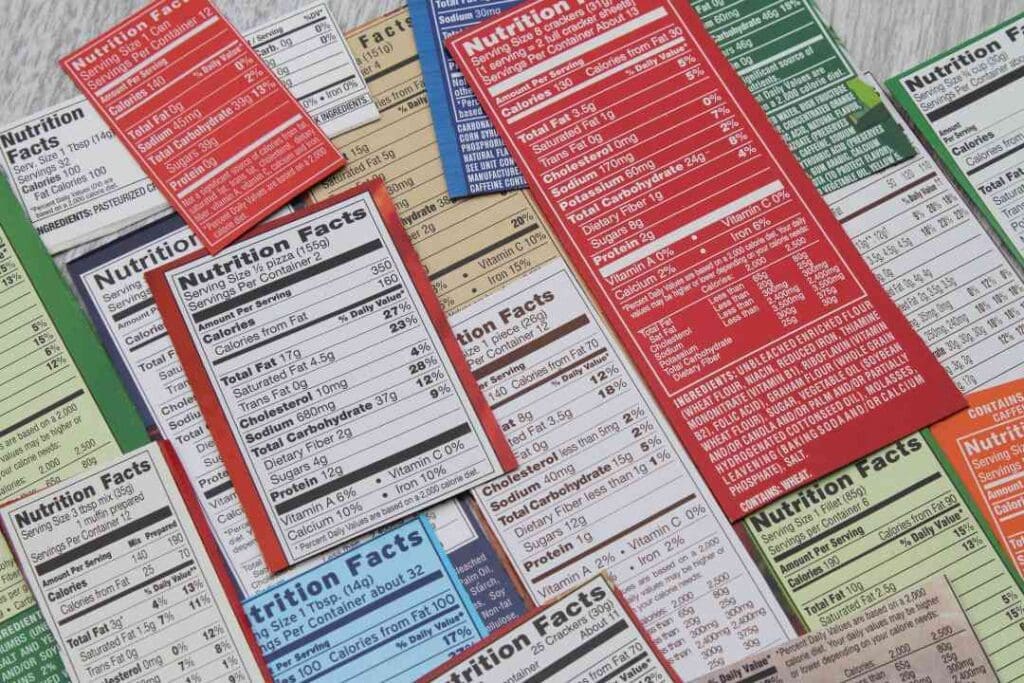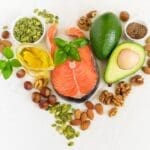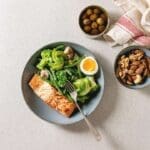When it comes to building healthy habits, it’s never too early to start teaching kids about food labels and nutrition. Teaching kids about food labels can be a fun way to start healthy habits early, sparking curiosity about what they eat. Here’s how you can make learning about food labels fun, interactive, and age-appropriate.
Why Teaching Kids About Food Labels Matters
Helping kids understand food labels doesn’t have to feel overwhelming. By focusing on whole, nutrient-dense foods and avoiding overly processed options, you can instill a holistic view of health. By breaking it down into small, manageable steps and making it interactive, you can turn learning into a fun bonding activity. This approach makes it easier for both parents and children to embrace healthier eating habits together.
Understanding food labels helps kids:
- Recognize hidden sugars and additives.
- Compare products to find healthier options.
- Develop critical thinking skills when it comes to advertising and packaging claims.
These skills not only improve their health now but also prepare them to make informed choices as they grow.
Step-by-Step Guide to Teaching Food Labels
Create a Positive Mindset Around Food
- Avoid framing foods as “bad” or “off-limits.” Instead, emphasize balance and variety, explaining that some foods are for growing strong, some are for special treats, and all can fit into a healthy lifestyle when chosen mindfully. Discuss how certain foods help their body grow, give them energy, or support their brain. This approach encourages curiosity without guilt and fosters a positive relationship with food.
- Use simple analogies kids can relate to, like comparing food to fuel for a car: the better the fuel, the better the car runs. You can also compare the body to a garden that needs good “soil” (nutritious food) and “water” (hydration) to thrive. Incorporate playful storytelling, such as imagining vitamins as superheroes helping their body fight off villains like fatigue or sickness.
Teach the Role of Key Nutrients with a Holistic Focus
- Protein: Highlight how high-quality protein sources like eggs, grass-fed meat, and fish help build strong muscles, repair tissues, and support overall growth. Explain that protein also keeps them full longer, making it easier to concentrate and stay energized throughout the day.
- Fruits and Vegetables: Emphasize the importance of incorporating low-glycemic and low-oxalate fruits and vegetables into their meals. Highlight options like zucchini, cucumbers, green beans, strawberries, and limes as nutritious choices. Explain how these foods are packed with essential nutrients and help support digestion and overall health. Use relatable examples, such as “eating cucumbers can help you stay hydrated on hot days,” or “zucchini noodles make a fun and healthy pasta swap.”
- Healthy Fats: Explain how fats from sources like butter, ghee, and animal fats are important for their brain development and provide long-lasting energy. Discuss how healthy fats can help them stay focused and improve their mood, comparing it to fueling up for a long bike ride or a day at school.
- Vitamins and Minerals: Discuss how specific nutrients are like tools for their body. For instance, Vitamin C is the “defender” that helps fight off colds, while calcium acts as the “builder” for strong bones and teeth. Introduce them to colorful fruits and vegetables as a way to get a variety of these “tools” every day.
Make It Fun and Hands-On
- Label Scavenger Hunt: During grocery shopping, challenge your kids to find items with the shortest ingredient list or the least added sugar. Turn it into a game by timing them to see how quickly they can spot the best options. Reward their efforts with a healthy snack or a fun treat from the cleaner options they discover.
- Build a Meal Together: Have your kids pick ingredients by reading labels to create a balanced meal. Let them take the lead in deciding which proteins, vegetables, and healthy fats to include. Encourage creativity by suggesting themes like “rainbow plates” with colorful fruits and vegetables or “taco night” with a focus on simple, whole ingredients.edients by reading labels to create a balanced meal.
Focus on Sugar Awareness
- Spot Hidden Sugars: Teach kids how sugar can hide under names like fructose, maltodextrin, and corn syrup. Make it a fun learning activity by reading ingredient labels together and creating a list of “sneaky sugar names” to watch out for. Encourage them to identify these hidden sugars in everyday snacks and compare options to find better choices. This helps them feel more in control of their food decisions.
- Visualize Sugar: Show them how many teaspoons of sugar are in their favorite drinks or snacks by measuring it out. Use clear visuals like a small pile of sugar on a plate or filling a glass with sugar to represent what’s in a soda or candy. Pair this activity with discussions about healthier alternatives and how those choices can help their body feel better and stronger.
Explain Additives and Preservatives with a Focus on Whole Foods
- Decode Labels: Help kids identify additives like artificial colors, flavors, and preservatives. Explain how these ingredients can affect their body, such as by causing digestive discomfort or impacting focus and energy levels. Use examples of common additives, like “red 40” or “MSG,” to show them what to look out for. Turn it into an engaging activity by making a “red flag” list of additives to avoid during shopping trips.
- Make Better Swaps: Show them alternatives for snacks with cleaner ingredients, emphasizing options without artificial colors or preservatives. For example, introduce them to snacks from the Dye-Free and Seed Oil Free Snacks list. Discuss why whole foods like fresh fruits, vegetables, or minimally processed options are better choices. Encourage kids to get involved by picking their favorite healthy snacks to add to the pantry.
Teach Kids About Marketing Tricks
- Spot the Claims: Discuss how labels like “natural,” “low-fat,” and “made with real fruit” can be misleading. Explain how these phrases are often used to make products seem healthier than they really are. For instance, “natural” doesn’t always mean free of additives, and “low-fat” can mean the product has added sugar to compensate for flavor. Role-play scenarios where your kids pretend to be label detectives, spotting these tricky claims on products.
- Focus on Facts: Encourage kids to check the ingredient list and nutritional information rather than trusting front-of-package claims. Show them how to look beyond colorful packaging and catchy words to find what’s really inside. Create a simple checklist for them to follow, like “1. Check the first three ingredients,” or “2. Look for added sugars or artificial names.” This helps them develop a habit of critically evaluating products instead of being swayed by marketing.
Tips for Keeping It Simple and Practical
- Use Visual Tools: Bring along charts, cards, or a printable guide to simplify learning. Visual aids can help kids better understand what to look for on labels.
- Practice During Meal Prep: Involve your kids in preparing meals, asking them to read ingredient labels and choose the healthiest options.
- Limit Choices: When teaching young kids, start by comparing two items instead of overwhelming them with too many options.
- Be Patient: Learning takes time. Praise their efforts and focus on small wins, like identifying a healthier snack or spotting hidden sugar.
- Make It a Game: Turn label reading into a fun challenge, like “Who can find the shortest ingredient list?” or “Spot the hidden sugar name!”
- Start Early (Ages 6 Months – 3 Years): Even at this young age, you can introduce the basics of healthy eating through exposure and conversation. Talk about the colors and textures of foods while they eat. For example, say, “This carrot is orange and crunchy—it helps us see better!” Let them help with simple tasks like picking fruits at the store or stirring ingredients. Reading books about food and nutrition can also create positive associations.
- Young Kids (Ages 4–7): Focus on introducing food categories with fun, visual methods. Use games like “Is this a fruit or a vegetable?” or “Pick the healthiest snack” to make learning engaging. Teach them to identify foods with simple ingredient lists and recognize unhealthy options by pointing out artificial colors or excess sugar. Simple activities like counting sugar cubes for drinks or snacks can help make concepts tangible.
- Tweens and Preteens (Ages 8–12): Dive deeper into understanding ingredient lists and what they mean. Explain the importance of avoiding artificial additives and choosing whole, nutrient-dense options. Encourage them to compare similar products to find healthier choices based on ingredients rather than flashy packaging. Introduce them to basic concepts of how food affects energy levels, digestion, and growth, and involve them in meal planning or grocery shopping.
- Teens (Ages 13+): Build on their growing independence by discussing how nutrition affects long-term health, energy, and mood. Teach them to read labels critically, focusing on identifying hidden sugars, misleading marketing claims, and overly processed ingredients. Discuss the connection between diet and fitness, mental clarity, and overall well-being. Empower them to make informed decisions by exploring topics like the benefits of whole, minimally processed foods and how to cook simple, balanced meals on their own.
Make It a Lifestyle, Not a Lesson
Teaching kids about food labels doesn’t mean turning every grocery trip into a lecture. Instead, focus on weaving these habits into your daily life so they feel natural and enjoyable for both parents and kids. By making food education a part of everyday activities, you help foster curiosity and build confidence in understanding food quality and its impact on well-being.
Set the Example
Children often model what they see. Let them watch you read labels, compare ingredients, and make mindful swaps for healthier options. For example, explain why you’re choosing one product over another: “This one doesn’t have added sugar, so it’s better for our energy.” By showing enthusiasm and curiosity about food, you’ll encourage them to adopt the same habits.
- Involve them in your decisions: “Should we choose the unsweetened applesauce or the one with cinnamon?”
- Let them catch you making mistakes too: “Oops, I grabbed one with added sugar by accident. Let’s put it back!”
Encourage Questions
Make room for curiosity and allow them to ask why certain ingredients are included or why one choice might be better than another. When they ask questions you’re not sure about, look up the answers together. This not only strengthens their knowledge but also demonstrates that learning about food is a lifelong process.
- Use questions like: “Why do you think they added that color to the cereal?” or “What could we eat instead of this snack?”
- Encourage critical thinking by asking, “Do you think the bright packaging means it’s better for us?”
Integrate Learning Into Everyday Moments
- Cooking Together: Use meal prep time to point out ingredients, talk about what each item does for the body, and experiment with healthy swaps.
- Grocery Shopping: Treat it like a treasure hunt, encouraging them to find products with whole, recognizable ingredients.
- Eating Out: Discuss menu options and explain why certain choices might feel better for their body after the meal.
Celebrate Small Wins
Rather than overwhelming them with rules, celebrate their progress. If they find a healthy swap or choose a dye-free treat, praise their effort and let them feel proud of their decisions. Positive reinforcement keeps them engaged and motivated to continue learning.
Resources for Parents
If you’d like to learn more about ingredients and nutrition, check out these blog posts:
- The FDA Finally Bans Red Dye No. 3—What This Means for Your Health
- 7 Surprising Ingredients Hiding in Your Pantry That Could Be Affecting Your Health
- The Hidden Dangers of Vegetable and Seed Oils
- Understanding Vitamins and Minerals: Essential Nutrients for a Healthy Life
- Protein Power: Why Protein is Essential for Your Health

Teaching kids about food labels should feel natural and engaging. Incorporate these tips into everyday activities, like meal prep or shopping trips. Encourage discussions about ingredients and how whole, minimally processed foods support their energy and growth.













